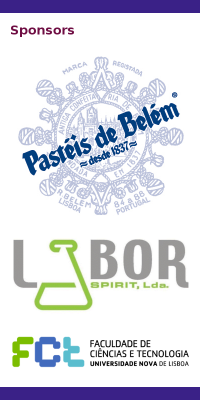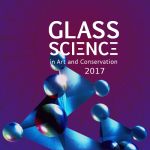|
David Dungworth
Heritage Science Solutions
|
|
A Tale of Two Industries: The manufacture of bottle and window glass in England from the 17th to the 20th centuries
Glass has been manufactured in Europe for several millennia. In the post-medieval period (16th to 20th centuries) glass was produced for three main sectors: tableware (drinking cups, etc), flat glass (windows and mirrors) and containers (mainly bottles). Each sector has, at various times, had different requirements and found different technological solutions, although each has tended to borrow solutions developed in other sectors. This paper focuses on bottle glass and window glass manufacture in England from the mid-17th century to the 20th century.
|
|
Monica Ganio
Getty Conservation Institute
|
|
Cobalt and potassium structure and degradation pathways in painted works of art
Smalt is a cobalt-potash ground-glass made by mixing a roasted cobalt ore, a potassium-rich flux, and sand at high temperatures. In oil paintings, smalt often discolors from a deep blue to a grey-yellow color. Typical of alkali silicate glass, smalt is sensitive to humidity: an ion exchange reaction between hydrogenated species (H+) in the environment and the alkali (Na+and K+) content of the glass leaches potassium/sodium from the smalt. The potassium depletion causes a reorganization of the atomic structure, and changes the coordination symmetry of the cobalt ions, resulting in the observed color change. In contrast to this visible degradation in oil paint, smalt-containing blue passages in illuminated manuscripts – which typically use glair or gum arabic as a binding medium for pigments – remain a vivid blue. This observed difference in color-fastness is the motivation for our research into how binding media other than oil affect the degradation process of smalt.
We posit that the degradation mechanism of smalt is affected by (i) the binding medium in which it is dispersed, and (ii) the chemical composition of the Co-blue potash glass. The study of smalt formulations with variable K2O content, dispersed in several different binding media, as a function of aging can help elucidate the degradation mechanism.
Potassium and cobalt K-edge XANES were selected as they allow simultaneous examination of the coordination geometries of the metals involved, and their distribution within heterogeneous paint layers, which can determine the correlation between potassium leaching and cobalt coordination symmetry within the glass matrix. These synchrotron measurements are complemented by laboratory analysis (FORS, ICP-MS, GC-MS and FTIR). This work increases our understanding of the effect of binding media on the degradation mechanisms of smalt and, by extension, of other glass-based pigments.
|
|
Marco Verità
LAMA Laboratory, Sistema dei Laboratori, IUAV University, Venice (Italy)
|
|
Renaissance Venetian enamelled glass. An analytical investigation to understand their technology and to distinguish genuine and copy artefacts
Venetian enamelled glass is one of the most significant subjects of the art and technology of Renaissance glassmaking. An analytical study using non-invasive and micro-invasive techniques on a wide selection of enamelled glass artworks from museums and archaeological finds is in progress. The aim is to characterise the materials and technology of genuine Venetian Renaissance enamelled glass production and to identify specific features allowing these objects to be distinguished from contemporary façon de Venise products and 19th century copies and fakes.
|
|
Andrea Ceglia
Department of Applied Physics and Photonics, B-PHOT group, Vrije Universiteit Brussel, Pleinlaan 2, B-1050 Brussels, Belgium
|
|
Overview of glass chemistry and technology in late antique Cyprus
In this work we will summarize the work carried out in the last years by our group in the field of glass archaeometry. In addition we will discuss the forthcoming research results that will extend our work. We present the multi-analytical approach based on UV-vis- NIR absorption spectroscopy, XANES spectroscopy, EPMA and LA-ICP- MS to investigate the Cypriot glass industry in the late antiquity. The variety of techniques used let us investigate technological aspects such as origin of the colour and reducing conditions as well as provenancing raw glass and recycling. Cyprus is located in very close proximity to the primary factories of raw glass, therefore it offers an interesting point of view on the distribution of glass. Because of its geographical proximity to primary production areas, on the island we can find basically all glass types circulating in the Mediterranean area in this period. In addition to very common glass compositions, i.e. Levantine, HIMT and Foy 2, we found also more rare material, such as Egypt 1 glass, rarely exported outside Egypt, and high-Al glass probably manufacture in the Anatolian peninsula.
|
|
Inês Coutinho
VICARTE Research Unit- Glass and Ceramic for the Arts, FCT NOVA, Campus de Caparica, 2829- 516 Caparica, Portugal
|
|
The use of glass in medieval pigment making
The use of glass, under many forms and with different functions, in medieval recipes for the production of pigments to be used in medieval manuscripts’ illuminations, is discussed. The Portuguese book “O Livro de komo se fazen as kores das tintas todas” (LKSK), in English “The book on how to make all the colours”, dated to the 15th century will be examined as a case study. This book, which is a compilation of several recipes that can be traced back to the 13th century, has been the subject of interest of several scholars (Afonso, Cruz, & Matos, 2013; Matos & Afonso, 2014; Melo & Castro, 2016; Strolovitch, 2010), and is currently in the focus of a larger project being developed at the Department of Conservation and Restoration from the FCT/ UNL (Melo & Castro, 2016). The purpose of the current study is to identify those recipes in the manuscript that mention glass, directly and indirectly, in many forms and functions. Thereby, we intend to gain a better understanding of the presence and importance of glass in the medieval scriptorium.
|
|
Susana Coentro
VICARTE – Research Unit “Glass and Ceramic for the Arts”and Department of Conservation and Restoration, FCT NOVA, 2829-516 Caparica, Portugal
|
|
Hispano-Moresque architectural glazes in the context of medieval glass technology
Hispano-Moresque architectural tiles were extensively used in Portugal and Spain, during the 15th and the first half of the 16th centuries. Their rich patterns comprise mainly five colours – tin white, cobalt blue, copper green, iron amber, and manganese brown – which are all obtained from high lead glazes with the addition of specific metal oxides (Coentro et al., 2014). These different coloured glazes are physically separated on the tile surface, either by a dark manganese-brown line (believed to contain a greasy substance such as linseed oil), which is known as the cuerda seca technique, or by a ridged contour line that acts as “wall” in the arista technique.
From the study of two Portuguese Hispano-Moresque tile collections – the National Palace of Sintra (PNS) and the Monastery of Santa Clara-a- Velha (SCV), in Coimbra – the glaze technology is analysed in the context of coeval glaze, glass, and enamel production. Starting with the colour palette and with special emphasis on tin-opacified glazes, the aim of this communication is to present a short summary of the process of technological transfer that contextualises these glazes.
|




